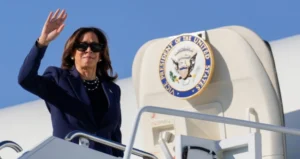Childcare Costs Surge: A Crucial Election Issue for 2024
The rising costs of childcare have become a significant concern for families across the United States, especially as we approach the 2024 elections. This issue is not only a matter of personal finance but also a pivotal topic in political discourse, affecting millions of families and the broader economy.
Recent reports indicate that childcare expenses have surged dramatically, compelling candidates to address this pressing issue as they campaign for votes.
The Current State of Childcare Costs
According to a recent article from USA Today, the average American family spends approximately $11,000 annually on childcare. This figure has increased by nearly 250% since 1991, highlighting a long-term trend of escalating costs that outpace wage growth and inflation.
Childcare costs rose by 4.1% over the year ending in April 2024, surpassing the overall inflation rate by more than half a percentage point.
Key Statistics on Childcare Costs
- Average Annual Cost: $11,000 per child.
- Increase Since 1991: Approximately 250%.
- Recent Annual Increase: 4.1% over the last year.
This financial burden is particularly acute for families with multiple children or those living in high-cost areas. Many parents find themselves allocating a significant portion of their income to childcare, often at the expense of other essential needs.
Political Implications and Proposals
As the November elections approach, childcare has emerged as a crucial topic for candidates across both major parties. Voters are increasingly concerned about how rising childcare costs affect their ability to work and support their families. According to polls, 89% of voters want candidates to have clear plans addressing childcare challenges.
Candidates’ Positions
 Vice President Kamala Harris has proposed limiting childcare expenses to 7% of family income, aligning with broader goals set out in the Biden administration’s initiatives.
Vice President Kamala Harris has proposed limiting childcare expenses to 7% of family income, aligning with broader goals set out in the Biden administration’s initiatives.
This proposal aims to alleviate financial pressure on families and ensure that parents can afford quality care for their children without compromising their economic stability. On the other hand, former President Donald Trump has faced criticism for his vague responses regarding childcare policy. While he acknowledges the importance of addressing childcare costs, his lack of a concrete plan has raised eyebrows among both supporters and opponents.
Bipartisan Support for Solutions
Despite differing views on how to tackle the issue, there is bipartisan agreement on the need for action. For instance:
- In Pennsylvania, lawmakers have expanded the state’s child tax credit to help families with lower incomes.
- Many voters support increasing federal funding for childcare programs, indicating that solutions should prioritize accessibility and affordability.
The Economic Impact of Childcare Costs
The skyrocketing costs of childcare not only strain family budgets but also pose risks to the overall economy. When parents struggle to afford care, it limits their ability to participate in the workforce fully. This situation creates a ripple effect that can hinder economic growth and productivity.
The Connection Between Childcare and Economic Strength
A recent study found that access to affordable childcare is essential for strengthening the economy. Approximately 68% of voters believe that improving access to high-quality childcare is critical for economic stability. This sentiment is echoed across party lines:
- 84% of Democrats
- 64% of Independents
- 53% of Republicans
These statistics underscore the widespread recognition that affordable childcare is not just a personal issue but a national economic priority.
Challenges Faced by Childcare Providers
Childcare centres are also feeling the pinch of rising operational costs. Many providers are struggling to balance affordability for families with fair wages for staff. For example, owners of local daycare centres report needing to raise tuition prices due to increased food costs and wage demands.
The Financial Strain on Providers
- Median Weekly Wage in Childcare: Approximately $635 (about $33,000 annually).
- Many providers are forced to make tough decisions about raising tuition or cutting services, which can further exacerbate the affordability crisis.
Looking Ahead: What Needs to Change?
As we move closer to the elections, candidates must present actionable solutions that address both family needs and provider sustainability. Here are some potential strategies:
- Increased Federal Funding: Expanding support for programs like the Child Care Development Block Grant (CCDBG) could provide much-needed resources.
- Tax Credits: Enhancing tax credits for families could alleviate some financial burdens associated with childcare.
- Support for Providers: Investing in workforce development programs for childcare providers can help improve service quality and retention rates.
Conclusion: A Call for Action
The issue of rising childcare costs is more than just an economic concern; it’s a matter affecting millions of families’ day-to-day lives and prospects. As we approach the 2024 elections, candidates must prioritize this issue and present clear plans that will make quality childcare accessible and affordable for all families.
By addressing these challenges head-on, policymakers can create an environment where parents feel secure in their ability to work while ensuring their children receive quality care.
The time for action is now—families deserve better support as they navigate these critical years in their children’s lives. In summary, as discussions around childcare continue to unfold in political arenas, all stakeholders must recognize its importance—not only as a personal issue but as a cornerstone of economic stability and growth in America.
